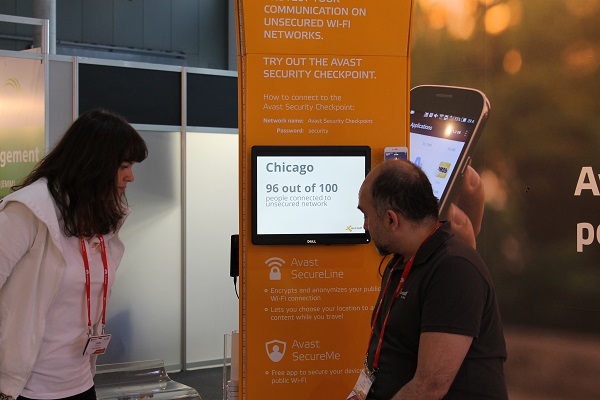 The Avast Mobile Security team demonstrated how easy it is to hack smartphones and tablets at the Mobile World Congress.
The Avast Mobile Security team demonstrated how easy it is to hack smartphones and tablets at the Mobile World Congress.
The sleekest smartphones, the coolest wearable devices, and the best in mobile security were debuted at the Mobile World Congress in Barcelona last week. But it was hacking user’s devices at the Avast booth that had the journalist’s buzzing.
Hacking unsecured Wi-Fi is easy enough for any IT college student
Filip Chytry, a mobile malware researcher that you are familiar with if you visit our blog, set up a wireless hotspot in the Avast booth that allowed visitors to track the online activity of any device that connects.
“The site will let Avast capture passwords, messages and other information people type on the websites, and Chytry can even create dead ringers for Gmail or Facebook sign-in screens – – down to the little green padlock icon that indicates a secure connection…,” reported Bloomberg Business in The Easiest Way to Get Hacked: Use Phone at Phone Show.
The hacking demonstration illustrated what Avast found out during a global Wi-Fi hacking experiment conducted right before MWC.
“The study found that people around the world overwhelmingly prefer to connect to unsecured and unprotected Wi-Fi networks instead of password-protected networks,“ wrote Help Net Security in Global experiment exposes the dangers of using Wi-Fi hotspots.

Most people connect to a completely unsecured public Wi-Fi hotspot without a second thought.
Security experts from Avast traveled to 9 cities on 3 continents, and found that Wi-Fi users in Asia are the most prone to attacks. Chicago and London are the most vulnerable in the USA and Europe. Avast’s spokesperson Marina Ziegler told E&T Engineering and Technology magazine, “…in London we found that 54 per cent of routers were weakly encrypted and easily accessible to hackers.”
“That means that if a hacker walks into a pub, he can access the router’s settings and for example reroute the traffic via another malicious server,” said Chytry. “That’s very easy. Every IT college student can do that.”